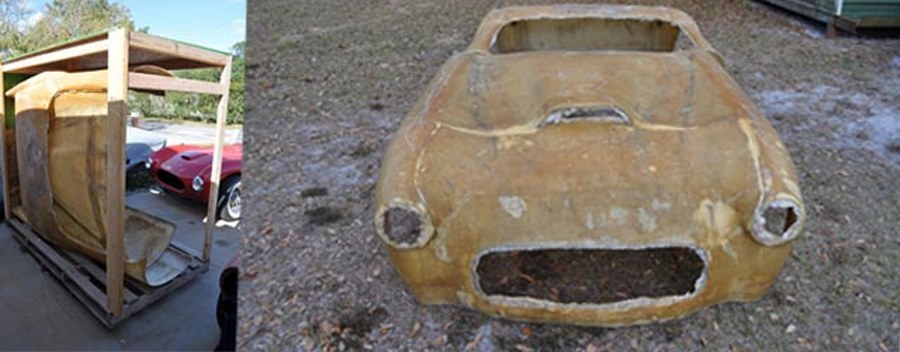
Hi Gang…
The saga of a nearly 60 year old unfinished fiberglass body continues. You just can’t stop the potential in this car body! Here’s what has happened so far in our story:
- Produced in the mid ‘50s in the Pasadena, California vicinity
- Purchased by Denny Allen around 1960 and ultimately moved by him many years later to his home in Ft. Benton, Montana
- And now freshly arrived in Fiberglass Farms in Florida, secure in its new home, like many folks who retire to this state each and every year
The story of this mysterion just keeps on going and going and going
We’re still working on what this car is – it’s heritage, that is. Click here to read our initial story of this car (body) and its story.
Recently, we’ve made some progress and have reason to believe it was built by a company in ’52 / ’53 called “Plastic Age Company” of Pasadena, California. We’ll share more about our thoughts as research reveals more information.
For now…let’s talk transport!
Denny Allen Retires To Montana – And So Does His Car (Body):
Denny always had plans to build himself a fiberglass bodied sports car. In fact, he did build some terrific cars, but just never got to finishing the “build” he started with this car, so he saved the body all thru:
- the swingin’ 60s
- the disco-dancing 70s
- the “me-decade” of the 80s
- the internet boom ‘of the 90s
- and the homeland security focus of the 00’s
Denny is one patient guy! And we love him for saving such a rare piece of ‘glass as we continue to appreciate these rarified designs and match their true history to their designers, fabricators, and company founders. Denny is truly one of the “Forgotten Fiberglass” team!
So, Denny and I started talking about saving this body about 5 years ago, and we had to work thru some obstacles. The first one was that he had already sold the body. As we tracked the new ownership, an opportunity presented itself to “re-acquired”it. That took about three years.
Then.. Denny “sprang” into action, and with the speed of a leopard and the focus of a laser. And we were back on track
Fall 2011: The Planning Begins
So, with much patience and planning, Denny and I teamed up with good friend and moving expert David Henton of “Engines Direct Freight” and put together a plan to move the “mysterion” body from “there” to “here.” “There” being Montana. “Here” being Tampa, Florida.
Step 1: Crate The Cargo
Denny was up to the task. Probably excited at the proposition of, again, moving the “mysterion body” to a new location, he jumped to action – a “call to arms” so as to say. Denny and his team put together a crate and positioned the body ready for pick-up.
Luckily, Denny had portioned the car into two sections and nested them to reduce space. This made it easier to crate – and less costly too.
But would the shipment beat the first snow in Montana of 2011?
Step 2: Transportation Teamwork
David Henton got the call that the shipment was ready. Fierce negotiations ensured and after what must have been hours, a shipment price was settled on and the carrier determined.
It would be Federal Express.
That’s cool! When they told me, I wondered if it would be here in two days, ground shipment?
Step 3: Florida Fiberglass
The “package” arrived safely – but not in two days (I wonder how much THAT would have cost!). Now to unload the cargo.
Step 4: Unloading
So…here’s the modern version of a fiberglass car body arriving at your house.
In the ‘50s, the crates were not solid like this – more of a series of boards to protect the body – and most of the body could still be seen from outside the crate looking in. Back then, I understand many of the “crates” arrived via railcar. I’ll have to ask if the folks who built their cars in the ’50s if they had to pick up the crates or if they were delivered.
Ted Griffin and Dick Foster (original Woodill Wildfire builders and owners) – how did your Woodill Wildfire bodies arrive back in the ’50s? Please let us know by commenting at the end of this story.
Step 5: Hiding
So where to hide the body (crate, that is) so my neighbors won’t notice. I found just the best place of all – at the front of my driveway.
Who would complain?
Step 6: Unpacking
Several days later when the neighbors showed up with hot tar and feathers, we decided to uncrate the body (I thought hot tar, pitchforks, and feathers were a thing of the past…) Here I pressed my Uncle Phil – “Phoon” as he is known in our family – into action. First we uncrate the package, and then check out the vintage ‘glass body for the very first time in its new home in Florida.
Step 7: Moving To Fiberglass Farms
So I thought to myself…”How do I get this body moved again – to Fiberglass Farms?” Luckily, patience and procrastination favors the unprepared, and when I came back from my McCormack holiday trip in late 2011, I had my answer. Let’s drop off two cars at once. What a deal! How lucky could I get?
Step 7: Let’s Have a Look
So here’s what the mysterion body looks like as of today – having safely made it out to the secret location of Fiberglass Farms – somewhere lost to time in Florida…
So What Does a Finished Mysterion / California Special Look Like?
Great question – and there are two finished / restored Mysterions out there. Click here to learn about our recent restoration of one we call “The California Special.” And soon…I’ll be sharing a story about the other one owned by good friend Bob Deull of Buffalo, New York.
Summary:
So the mysterion body – aka the “California Special” (for now) – is safely stored at “Fiberglass Farms” – saved for future generations to appreciate and cast wondering glances on the true history and heritage of this “special” car from a “special” day. With any luck, we’ll know the true story of this car sometime in the future.
And for those of you who would like to know what one of these cars looks like when completed and restored, click here to see our “California Special” and its debut at the Amelia Island Concours d’ Elegance in 2010.
Pretty good history and heritage for a car where we don’t yet know the name or designer!
Hope you enjoyed the story, and until next time…
Glass on gang…
Geoff
——————————————————————-
Click on the Images Below to View Larger Pictures
——————————————————————-






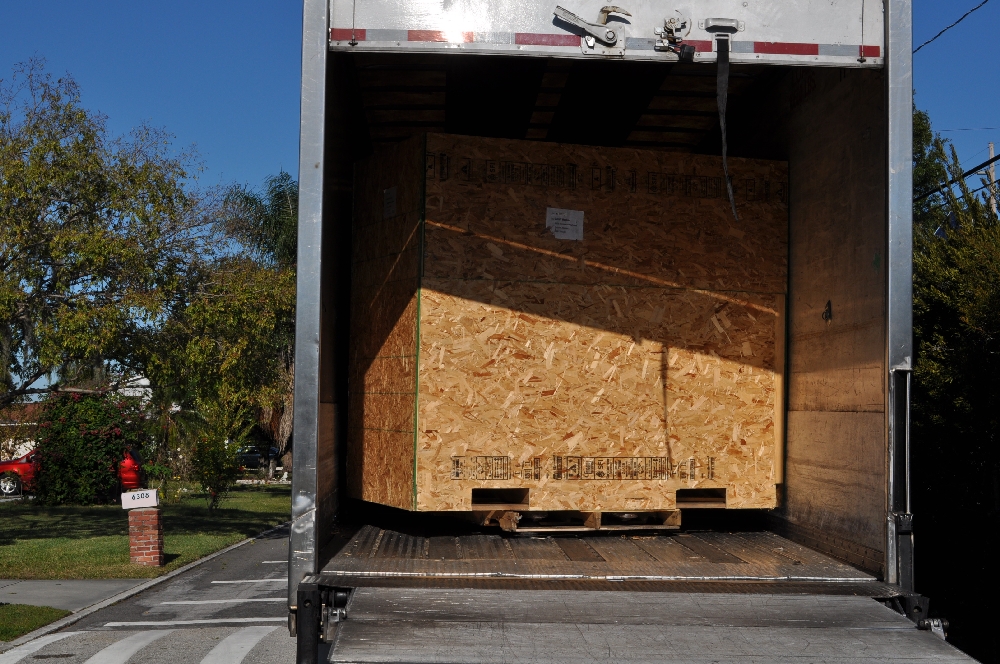










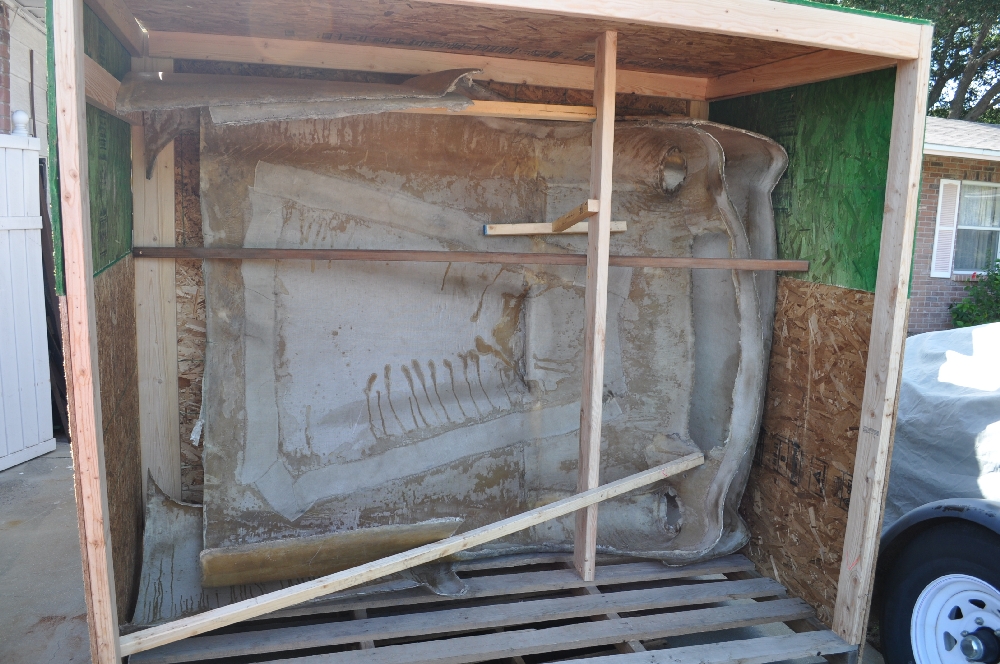












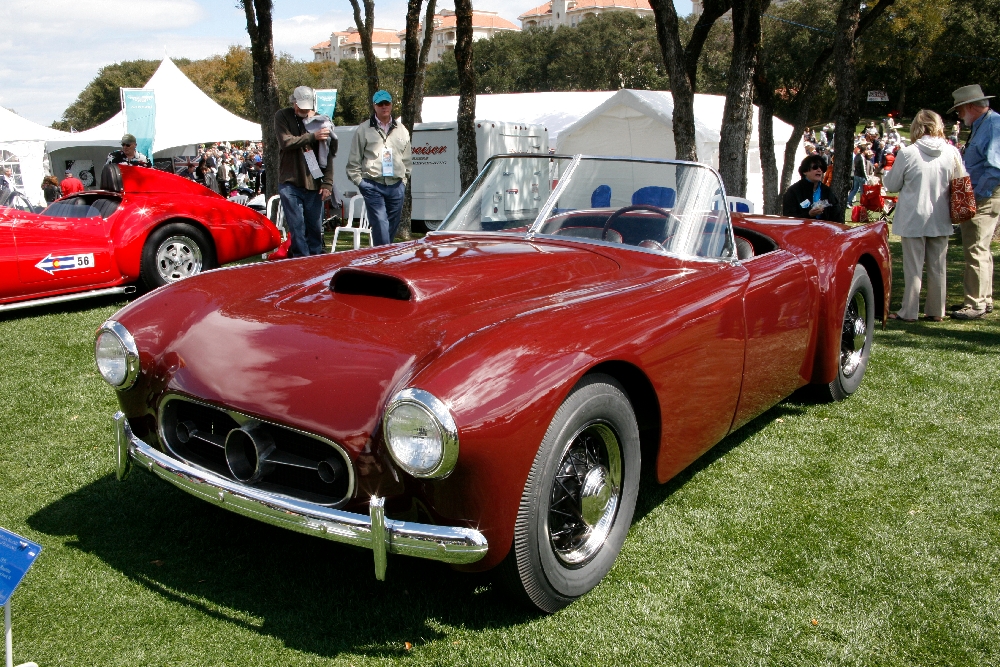

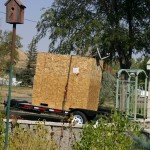

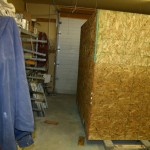
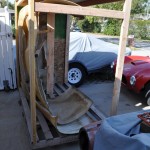

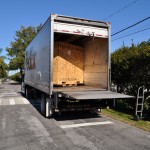
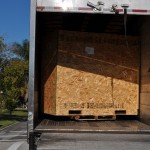
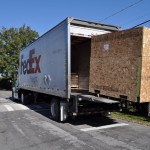
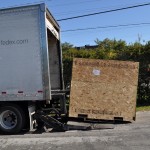
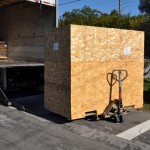
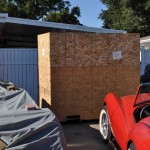
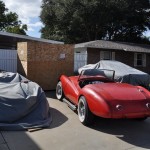
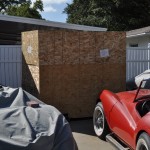
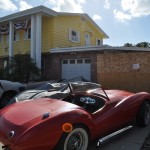
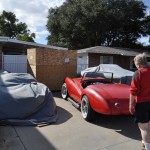
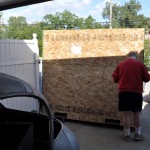
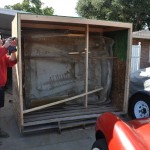
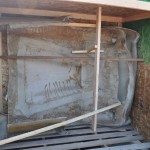
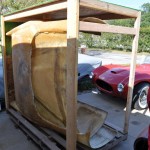
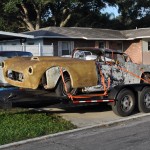
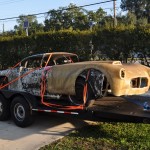
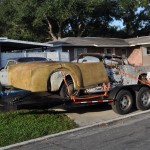
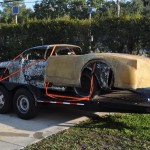

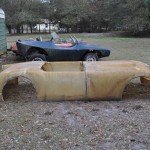
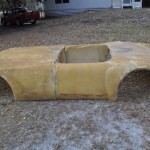
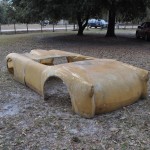
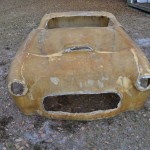
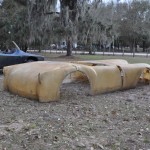
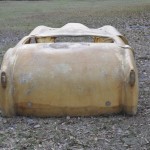
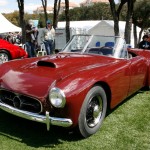
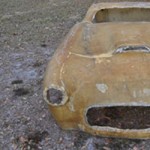
Happy to see that this fiberglass body is again in good hands. If I may ask: what is that grey primer ”car” (El Camino cab and top) in the background? Seem to be a nice project!
In 1954 my wildfire body was shipped From Orange Ca. by rail. The crate was built pretty light with 1X3’s or 4’s. First thing was it was lost for 8-10 days. I lived in Mason,Mi. it was found in Mason City Iowa. When I picked it up with a trailer I saw the crate had been damaged and someone had put a 2X4 diagonally on the side using prox 4 inch long nails. One of them went right thru a door. In the shifting when shipped it made a quarter sized hole in the door. The frame came with no crate of any kind, Not even a skid. There was just a tag wired to the frame with the destination address.
The Byers SR 100 body shell which I purchased from Jim Byers in 1958 as a 16 year old teenager, arrived in a large open crate consisting of 2×4’s and 1×4’s. We had waited for what seemed like a long time for it to be shipped. I believe Jim was in the process of moving his manufacturing facility at the time, and there was some delay.
On the day it arrived, my mother was playing bridge with some friends and announced with some enthusiasm that “Rollie’s body had come today”. The stunned silence of her bridge partners was finally explained by saying it was the fiberglass body for the car I was building! They were all very relieved and she was always more careful to explain my early fiberglass adventures in considerably more detail.
My Wildfire body came as one piece in an open crate of 1x4s and 2x4s by rail. The National Carloading Co did not deliver so we had to find a trailer to pick the body home. As it turned out the crate weighed more than the body. “Woodie” must have owned a lumber yard. The frame also came in heavy open crate, which meant another trailer and a lot of help to move the frame.
At Victress we shipped our bodies in open crates, just enough structure to support and protect the body, typically made of 1x4s. We never cut the bodies in half, below the door openings, which would have permitted nesting and smaller crates.
Re: body shipping, the last new one I bought was a dune buggy in the mid-1960s. It came in an ‘orange creat’ style cage made of 1 x 4s. I found it in my apartment driveway after work. It came from Lincoln NE to centeral Michigan for about 50 bucks. It may have had a couple 2 x 4 skids on the bottom.
Another fascinating story, Geoff. Sure wish I had some information on this one for you, but I’ve got nothing! This one is really a challenge.